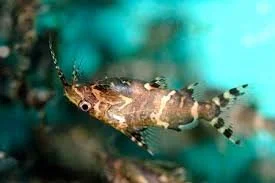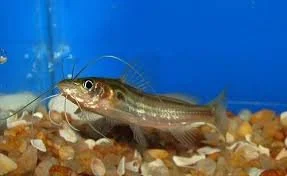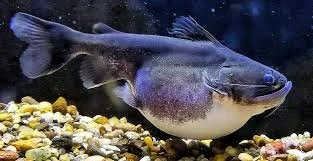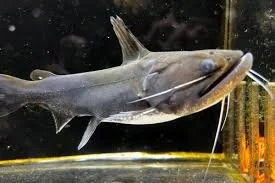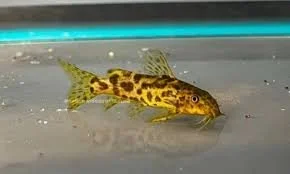 Image 1 of 1
Image 1 of 1


Catfish- Synodontis Waterloti
Synodontis waterloti is a species of upside-down catfish from West African waters, growing up to 18.5 cm (7.3 inches). It has a light tan or yellow background with small spots on the head and brown spots and blotches on the body, which extend to the adipose fin. This species is known for being peaceful and is sometimes called a "squeaker" for the noise it makes when disturbed.
Physical description
Size: Can grow up to 18.5 cm (7.3 inches).
Coloration: A light background with darker spots and blotches, with spots continuing to the adipose fin.
Fins: Has a forked caudal fin, a hardened dorsal spine, and pectoral fin spines that are serrated on the front edge.
Barbels: Features one pair of unbranched maxillary barbels and two pairs of mandibular barbels that are often branched.
Body shape: Fusiform, or normal, and is entirely spotted.
Behavior and characteristics
Upside-down swimming: While not as famous as some other species, Synodontis catfish are known for their upside-down swimming ability.
"Squeaking": Makes a squeaking sound when stressed or handled by rubbing its pectoral fin spines against the pectoral girdle.
Nocturnal: Can be more active at night, but some species may be active during the day as well.
Territorial: Likes to have its own territory, often a cave or pipe, to feel comfortable.
Habitat and care
Habitat: Native to West African waters, including Guinea, Liberia, and Ivory Coast.
Aquarium setup: A soft sand substrate is best for protecting their barbels. Provide plenty of hiding spots like rocks and driftwood.
Tank mates: Peaceful and suitable for community tanks, but may fight occasionally.
Diet: Omnivorous, but lean towards carnivorous. Prefers high-quality sinking pellets and supplements with frozen foods like bloodworms and brine shrimp.
Water conditions: Adaptable to a wide range of conditions. For this species, ideal conditions are a temperature of
23-25°C (73−77°𝐹) and a pH of 6.5-7.5.
Synodontis waterloti is a species of upside-down catfish from West African waters, growing up to 18.5 cm (7.3 inches). It has a light tan or yellow background with small spots on the head and brown spots and blotches on the body, which extend to the adipose fin. This species is known for being peaceful and is sometimes called a "squeaker" for the noise it makes when disturbed.
Physical description
Size: Can grow up to 18.5 cm (7.3 inches).
Coloration: A light background with darker spots and blotches, with spots continuing to the adipose fin.
Fins: Has a forked caudal fin, a hardened dorsal spine, and pectoral fin spines that are serrated on the front edge.
Barbels: Features one pair of unbranched maxillary barbels and two pairs of mandibular barbels that are often branched.
Body shape: Fusiform, or normal, and is entirely spotted.
Behavior and characteristics
Upside-down swimming: While not as famous as some other species, Synodontis catfish are known for their upside-down swimming ability.
"Squeaking": Makes a squeaking sound when stressed or handled by rubbing its pectoral fin spines against the pectoral girdle.
Nocturnal: Can be more active at night, but some species may be active during the day as well.
Territorial: Likes to have its own territory, often a cave or pipe, to feel comfortable.
Habitat and care
Habitat: Native to West African waters, including Guinea, Liberia, and Ivory Coast.
Aquarium setup: A soft sand substrate is best for protecting their barbels. Provide plenty of hiding spots like rocks and driftwood.
Tank mates: Peaceful and suitable for community tanks, but may fight occasionally.
Diet: Omnivorous, but lean towards carnivorous. Prefers high-quality sinking pellets and supplements with frozen foods like bloodworms and brine shrimp.
Water conditions: Adaptable to a wide range of conditions. For this species, ideal conditions are a temperature of
23-25°C (73−77°𝐹) and a pH of 6.5-7.5.


